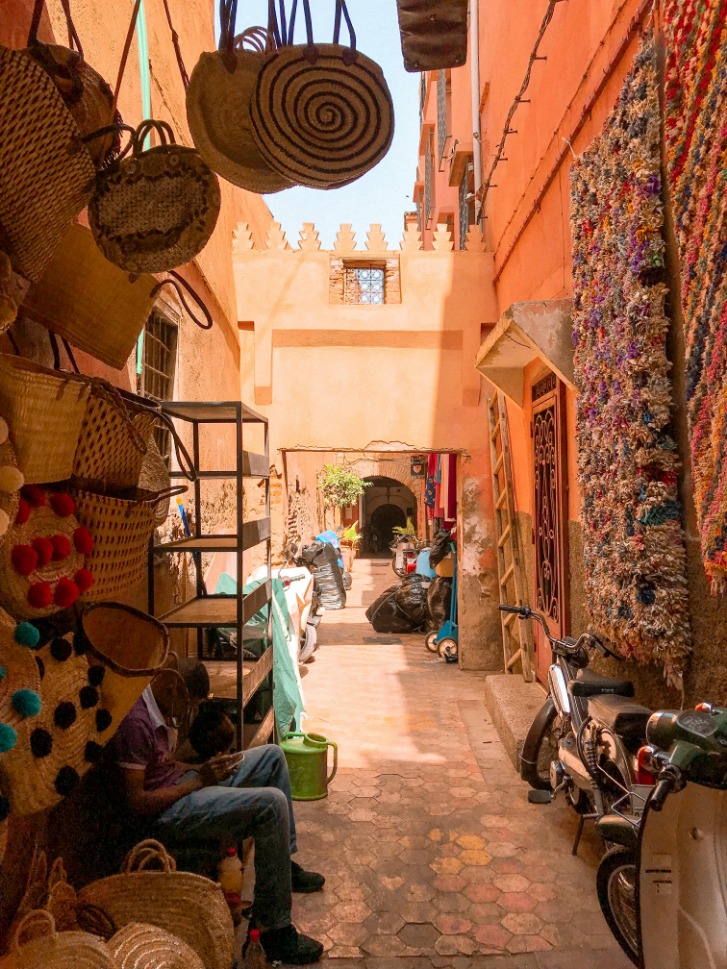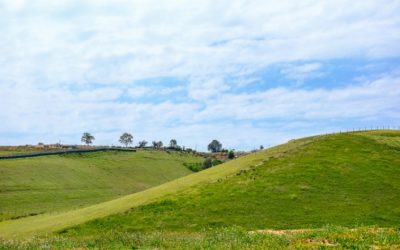Optimal Seasons to Visit Morocco
Morocco offers a diverse climate that makes choosing the right time to visit essential for an enjoyable experience. The optimal seasons to explore this vibrant country depend on your preferences, whether you want to enjoy its bustling cities, serene deserts, or scenic mountains. Understanding the climate patterns helps travelers plan their trips to enjoy favorable weather conditions and avoid extreme temperatures or harsh weather during their visits.
Spring (March to May)
Spring, lasting from March to May, is considered one of the best times to visit Morocco due to its pleasant weather and vibrant landscapes. During this season, temperatures are warm but not excessively hot, making it ideal for exploring cities, hiking in the Atlas Mountains, and enjoying outdoor activities. The countryside bursts into color with blooming wildflowers and lush greenery, providing stunning scenery for travelers. Additionally, spring festivals and local markets add to the cultural richness of the experience, making it a perfect time to immerse yourself in Moroccan traditions while benefiting from comfortable weather conditions.
Autumn (September to November)
Autumn, from September to November, is one of the best times to visit Morocco. During this season, the weather is pleasantly warm and gradually cooling down from the intense summer heat, making it ideal for exploring the country’s vibrant cities, ancient medinas, and scenic landscapes. The temperatures are comfortable enough for outdoor activities such as hiking in the Atlas Mountains or wandering through the bustling souks of Marrakech and Fes. Additionally, autumn offers clearer skies and fewer tourists compared to the peak summer months, providing a more authentic and relaxed travel experience. This season also coincides with harvest festivals and local events, allowing visitors to immerse themselves in Moroccan culture and traditions. Overall, autumn presents a perfect balance of pleasant weather, cultural richness, and fewer crowds, making it an optimal season to visit Morocco.
Weather Considerations for Travelers
Planning the perfect trip to Morocco involves more than just selecting the right destination; considering the weather conditions is essential for a memorable experience. Understanding the climate patterns and seasonal variations can help travelers choose the best time to visit, ensuring enjoyable weather for sightseeing, outdoor activities, and cultural exploration. Being aware of weather considerations allows for better packing, planning, and overall trip comfort.
Temperatures and Climate
When planning a trip to Morocco, understanding the weather considerations, temperatures, and climate is essential to choosing the best time to visit. Morocco has a diverse climate that varies across regions, from Mediterranean on the coast to desert conditions in the interior and more temperate zones in the mountains. Summers can be extremely hot, particularly in the inland and desert areas, with temperatures often exceeding 100°F (38°C), which may be uncomfortable for some travelers. Conversely, winters are mild along the coast, with temperatures ranging from 50°F to 65°F (10°C to 18°C), making this period ideal for exploring cities like Marrakech or Fes comfortably. The mountainous regions, including the Atlas Mountains, experience colder temperatures and occasional snow, which can be perfect for winter sports. Spring and fall generally offer moderate temperatures and are considered the best times to visit, providing pleasant weather for sightseeing, outdoor activities, and experiencing local culture. It’s important for travelers to consider seasonal variations and regional climates when planning their trip to ensure they enjoy their visit comfortably and safely.

Rainfall and Humidity Levels
When planning a trip to Morocco, considering the weather conditions is essential to ensure an enjoyable experience. Rainfall and humidity levels can significantly influence your travel plans, especially if you prefer dry and comfortable conditions.
- Rainfall varies greatly throughout the year, with most precipitation occurring in the winter months from November to February. This period can bring frequent showers, particularly in the northern and mountainous regions.
- Summer months, from June to August, tend to be dry with minimal rainfall, making it an ideal time for beach activities and exploring desert areas.
- Humidity levels fluctuate depending on the region and season. Coastal areas, such as Casablanca and Essaouira, experience higher humidity, which can make the heat feel more intense during summer.
- In contrast, inland cities like Marrakech and Fes generally have lower humidity levels, providing more comfortable conditions during hot months.
- If you prefer dry weather and warm temperatures, the best time to visit Morocco is from late spring (April to early June) or early fall (September to October), when rainfall is minimal and humidity levels are moderate.
- Avoid traveling during the peak winter months if you dislike cold and wet conditions, especially in the mountains where snow can be prevalent.
- Keep in mind that weather conditions can impact outdoor activities such as trekking, sightseeing, and beach visits, so plan accordingly based on rainfall and humidity patterns.
Regional Climate Variations
Understanding regional climate variations is essential for planning the optimal time to visit Morocco. Different areas across the country experience distinctive weather patterns, from the scorching Sahara Desert to the temperate coastal regions and the cool, mountainous Atlas. By exploring these climate differences, travelers can better choose the ideal season for their journey, ensuring a comfortable and enjoyable experience in Morocco’s diverse landscapes.
Coastal Regions
Coastal regions in Morocco experience distinct climate variations that influence the best times to visit. These areas generally have a Mediterranean climate, characterized by warm, dry summers and mild, wet winters. The proximity to the Atlantic Ocean helps moderate temperatures, making coastal Morocco a comfortable destination year-round. During late spring and early autumn, the weather is particularly pleasant, with warm temperatures and less intense heat than the peak summer months. This period provides ideal conditions for exploring coastal cities like Casablanca, Essaouira, and Agadir, enjoying outdoor activities, and experiencing local culture without the summer crowds. In winter, the coastal climate remains mild, although some rainfall may occur, making it suitable for those who prefer cooler weather. Overall, the coastal regions’ moderate climate and seasonal variations define the perfect times for travelers seeking a balanced climate and enjoyable sightseeing opportunities in Morocco.
Interior and Desert Areas
Understanding regional climate variations, especially in interior and desert areas, is essential when planning a visit to Morocco. These regions exhibit unique weather patterns that influence the best times to explore their diverse landscapes.
The interior and desert regions of Morocco, such as the Sahara Desert and the Atlas Mountains’ inland areas, typically experience extreme temperature fluctuations. Summers can be scorching hot, with daytime temperatures soaring above 40°C (104°F), making outdoor activities challenging in the heat. Winters tend to be cooler, especially at higher altitudes, with some areas experiencing temperatures close to freezing during the night.
Ideal times to visit these regions are during the cooler shoulder seasons. Spring (March to May) and autumn (September to November) offer pleasant weather conditions, with moderate temperatures and less intense heat, perfect for exploring deserts, hiking, and cultural experiences without the discomfort of extreme temperatures.
- Spring (March to May): Mild temperatures and blooming landscapes make this an excellent time to visit for outdoor activities.
- Autumn (September to November): Cooler weather and clear skies provide ideal conditions for desert safaris and mountain excursions.
Atlas Mountains
The Atlas Mountains in Morocco offer a diverse climate that makes them an ideal destination at various times of the year. Due to significant elevation changes, the lower foothills typically experience milder temperatures, especially in spring and fall, providing pleasant conditions for exploration and outdoor activities. During summer, higher elevations tend to be cooler, making it suitable for trekking and sightseeing without the intense heat found in lower coastal areas. Winter months bring snowfall to the mountain peaks, transforming the region into a scenic winter wonderland perfect for skiing and snowboarding. Therefore, the best time to visit Morocco, particularly the Atlas Mountains, depends on your preferred activities—spring and fall are excellent for hiking, while winter appeals to winter sports enthusiasts. Ultimately, the region’s climate variations ensure enjoyable visits year-round for different interests.
Festivals and Events for Timing Your Visit
Timing your visit to Morocco is greatly influenced by local festivals and events, which offer a unique glimpse into the country’s vibrant culture and traditions. Attending festivals can enhance your travel experience, providing opportunities to celebrate alongside locals and witness colorful parades, music, and customs. Knowing when these events occur helps travelers choose the best time to explore Morocco, ensuring an unforgettable cultural journey.
Rose Festival in Kelaa M’gouna
The best time to visit Morocco for experiencing festivals and events is during the spring months, with the Rose Festival in Kelaa M’gouna being a highlight. Held annually in May, this vibrant celebration marks the blooming of thousands of wild roses in the Atlas Mountains. Visitors can enjoy colorful parades, traditional music, dancing, and local crafts, offering an authentic insight into Moroccan culture. Attending the Rose Festival during this period not only allows you to witness stunning natural scenery but also provides an opportunity to participate in unique cultural festivities. Planning your trip around this event ensures a memorable experience filled with rich traditions and scenic beauty.
Gnaoua World Music Festival in Essaouira
The Gnaoua World Music Festival in Essaouira is one of Morocco’s most vibrant and culturally rich events, making it a fantastic time to plan your visit. Held annually in June, this festival typically attracts music enthusiasts from around the world who come to enjoy mesmerizing performances of Gnaoua rhythms alongside international acts.
Visiting during the festival offers a unique opportunity to experience the lively atmosphere, colorful street performances, and diverse musical traditions that define Essaouira. To fully immerse yourself in the festivities, consider arriving a few days early or staying a few days after the event to explore the city’s historic medina, beaches, and local markets without the crowds. Planning your trip around the festival not only enhances your cultural experience but also allows you to enjoy the best of Morocco’s artistic and social scene during this exciting time of year.
Fes Festival of World Sacred Music
The Fes Festival of World Sacred Music is one of the most vibrant and culturally enriching events in Morocco, offering visitors a unique opportunity to experience diverse spiritual traditions through music and dance. Held annually in the ancient city of Fes, this festival typically takes place in June, creating an ideal time for travelers to plan their visit to enjoy the festivities and explore the city’s historic sites under pleasant weather conditions. Visiting during this period allows attendees to immerse themselves in a fusion of global musical acts and traditional Moroccan performances, enhancing the cultural journey. Planning your trip around the festival not only offers entertainment but also a chance to discover Fes’s rich heritage and vibrant street life.
Travel Peak Seasons and Off-Peak Advantages
Travel peak seasons and off-peak advantages play a significant role in planning the perfect trip to Morocco. Understanding the best times to visit can help travelers enjoy ideal weather, fewer crowds, and better deals on accommodations and activities. Whether seeking the vibrant energy of bustling festivals or the tranquility of quieter months, knowing the differences between peak and off-peak periods ensures a memorable and cost-effective Moroccan adventure.
High Tourist Season (Summer Months)
The best time to visit Morocco often depends on what travelers are seeking from their experience. During the high tourist season, which typically peaks in the summer months from June to August, destinations are lively and busy, offering vibrant festivals, bustling markets, and a lively atmosphere. However, this period also brings higher prices and larger crowds, especially in popular spots like Marrakech, Fes, and the Sahara Desert.
Traveling during off-peak seasons, such as late fall or early spring, provides several advantages, including fewer tourists, more comfortable temperatures, and better prices on accommodations and flights. These times allow for a more relaxed exploration of Morocco’s diverse landscapes and cultural sites without the summer rush.
In summary, while summer months offer a vibrant and energetic experience, visiting during the shoulder seasons can provide a more comfortable and economical trip, making it an ideal time for those looking to avoid the crowds and enjoy a more authentic Moroccan adventure.
Off-Peak Travel Benefits
The best time to visit Morocco depends on whether you prefer traveling during peak seasons or off-peak times, each offering distinct advantages. Traveling during peak seasons, typically from spring to early summer and fall, allows you to experience Morocco’s vibrant festivals, lively markets, and warm weather ideal for exploring cities and coastal regions. However, these months tend to be busier and more expensive, with popular attractions crowded and accommodation prices higher.
On the other hand, traveling during off-peak seasons, such as late winter or late summer, offers several benefits. Fewer tourists mean more peaceful sightseeing, shorter lines at attractions, and often better deals on hotels and tours. Weather can still be pleasant for exploring, especially in desert and inland regions, and you can enjoy a more authentic experience. Off-peak travel is perfect for those seeking a quieter, more affordable trip while still enjoying the rich culture and landscapes Morocco has to offer.





0 Comments